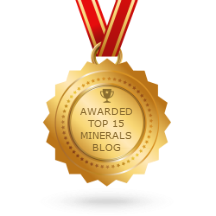Not so long ago, MEI's physical separation conferences typically opened with sessions on pre-concentration, most often centred around heavy medium separation (HMS). Today HMS barely earns a mention. The spotlight has shifted decisively toward pre-concentration by sensor-based electronic sorting, reflecting the rapid evolution of this technology.
We’re therefore delighted to welcome the two leading players in this field, Steinert and TOMRA, as sponsors of Physical Separation '26, to be held in Cape Town.
Steinert, a long-standing supporter, was a sponsor of both Physical Separation '24 and Comminution '25, and confirmed its ongoing involvement some time ago (posting of 6 January 2025). We’re now especially pleased to announce the participation of TOMRA in next year’s event.
TOMRA is a Norwegian company best known for its cutting-edge sensor-based sorting systems, originally developed for recycling and reverse vending machines. Over the years, TOMRA has become a major force in the mineral processing industry through its subsidiary TOMRA Mining, which specialises in sensor-based sorting technologies tailored to mining operations.
TOMRA offers a versatile portfolio of sensor technologies, each designed to target specific mineral sorting needs:
- X-ray Transmission (XRT): Differentiates materials based on atomic density; ideal for diamonds, gold, and base metals.
- Near-Infrared (NIR): Identifies materials based on surface chemistry; used for industrial minerals like quartz.
- Laser Sorting: Distinguishes materials by reflectivity and texture; particularly effective for minerals such as calcite.
- Colour Sorting (VIS): Separates particles based on visible colour differences; used in gem and industrial mineral applications.
TOMRA's latest innovation is CONTAIN, a major development in AI-powered ore sorting, engineered to reveal what traditional sorting can’t, by detecting inclusion-type ores like tin, tungsten, nickel, sulfides, and REE that often remain hidden deep inside. It visually classifies rocks based on the probability of subsurface mineral inclusions, transforming uncertainty into precision, and waste into value.
TOMRA Mining has made significant achievements in mineral processing over the past year. A standout achievement was its role in commissioning the world’s largest lithium ore sorting facility at Pilbara Minerals’ Pilgangoora mine in Western Australia. Part of the P680 Expansion Project, the plant processes more than 1,000 tonnes of ore per hour. By combining TOMRA’s XRT and colour sorting systems, the operation effectively removes barren material at the front end, boosting lithium recovery and product quality. This pre-concentration strategy is projected to reduce downstream energy consumption by 8-15 GWh per year, while also cutting water and reagent use.
Another milestone came in August 2024, when Lucara Diamond Corp. recovered a colossal 2,492-carat diamond at its Karowe Mine in Botswana using TOMRA’s advanced XRT sorters (posting of 29 August 2024). This remarkable find ranks as the second-largest diamond ever discovered, surpassed only by the 3,106-carat Cullinan diamond found in 1905. Impressively, it is the largest diamond ever recovered directly from run-of-mine ore, a testament to the precision and robustness of TOMRA’s sorting systems.
It’s fantastic to have TOMRA and Steinert, the two global leaders in sensor-based sorting, on board for Physical Separation '26, alongside our other current sponsor, Mineral Technologies. Their presence highlights the growing importance of cutting-edge technologies in modern mineral processing.















-EDIT.jpg)





No comments:
Post a Comment
If you have difficulty posting a comment, please email the comment to bwills@min-eng.com and I will submit on your behalf